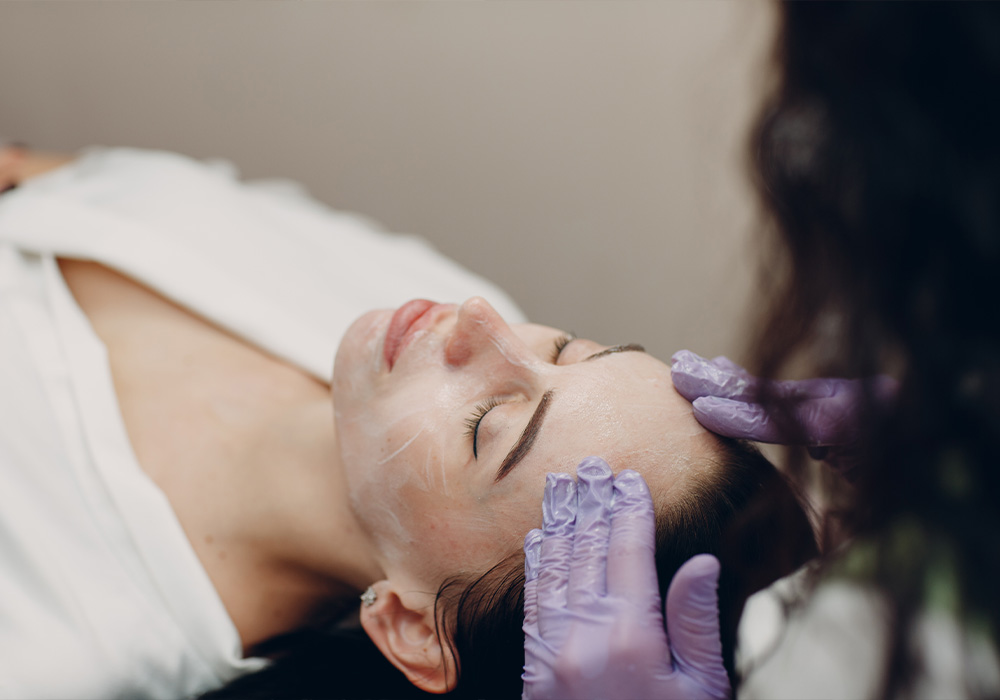Microcurrent is designed to provide painless electrical stimulation to lift and tighten the face, neck and body. With a host of options promising to work out your face, what can you actually expect in terms of results?
Featured Experts
- Anna Chacon, MD is a board-certified dermatologist in Miami
- Marina Peredo, MD is a board-certified dermatologist in New York
- Elaine Kung, MD is a board-certified dermatologist in New York
Tech Breakdown
Our bodies have a subtle electrical current; in fact, the brain produces enough power on its own to light a 15-watt light bulb. Microcurrent devices mimic that gentle level of electrical current to stimulate the facial muscles in order to lift, firm and tone them.
“Microcurrent technology works by sending low-level, painless electrical impulses to the muscles in the skin to stimulate them,” explains Miami dermatologist Anna Chacon, MD. “These impulses mimic the body’s natural bio-electrical field and help to ‘re-educate’ the muscles to tone and lift them. The technology also stimulates the production of collagen and elastin, which are the proteins responsible for the skin’s elasticity and strength. As a result, signs of aging are reduced.”
Microcurrent technology works by sending low- level, painless electrical impulses to the muscles in your skin to stimulate them.
Anna Chacon, MD
What the Science Says
According to New York dermatologist Marina Peredo, MD, we’ve been using versions of this electric stimulation for a long time. “Back in the day, before we had things like EMSCULPT, we would basically place electrodes on the patient that would force muscle contractions,” she explains. “It was kind of a lazy person’s workout, but it took several sessions to see results and it could quickly become too expensive.” The good news is, there are many studies on the effectiveness of microcurrent when it’s used traditionally, so we know the idea of electrical muscle stimulation works and has a beneficial outcome.
New York dermatologist Elaine Kung, MD says that unfortunately, there aren’t many strong studies that focus solely on the effect microcurrent has on signs of aging. Longterm studies showing effectiveness on wrinkles are still lacking, so the science isn’t considered a slam dunk. “Microcurrent’s anti-aging potential is tantalizing, but consider it a promising newcomer, not a seasoned star,” she says. “While some studies wink at its effectiveness, more research is needed before it steals the spotlight.”
At-Home Vs. In-Office
Dr. Chacon explains that the primary difference between microcurrent treatments administered in-office and at-home devices is the level of power. “Professional treatments are performed by trained clinicians who can adjust the device’s settings according to the specific needs and skin condition of each patient,” she says. “They also use professional-grade machines, which are more powerful and can penetrate deeper into the skin.” These treatments provide results with no downtime, but to maintain them, you’ll need to abide by a fairly consistent schedule.
While at-home devices may be less powerful, they are readily available for you to use whenever you have time. As a trade-off, you’ll need to use them more regularly. “You basically need to use these at-home devices every day,” Dr. Peredo says. “If not every day, then every other day. You really need to commit in order to maintain the results.”
If you already find it hard to make time for your skin-care routine, microcurrent may not be the best option for you. “I think it would be easier if you only had to use the device once a week,” says Dr. Peredo. “But I had a device in my office and never found the time to use it on myself.”
That said, if your skin-care regimen is your favorite part of the day or you’re committing to taking more time for yourself, a device like NuFACE TRINITY+ is an excellent addition to a routine.
At-Home Devices to Try
The best of microcurrent in the palm of your hand.






















